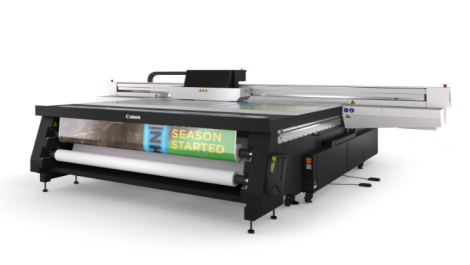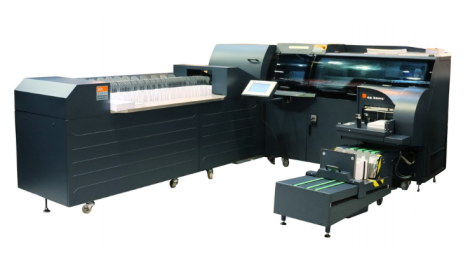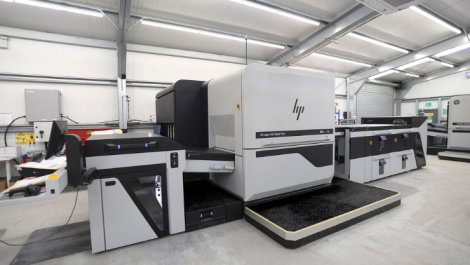Most of the latest papers announced for digital papers recently have been recycled papers, with the environment and prices uppermost in buyers minds. Nessan Cleary reports.
Paper has proven itself one of the most effective forms of communication, despite seemingly endless exhortations that we should save trees and print less. Yet surveys have shown that printed marketing campaigns are considerably more effective than email, and that people prefer to receive their bills and other communications on paper.
The reason seems to be that paper is tactile, it has a presence and commands a level of respect, not to mention that it can be enhanced through different finishes or effects such as embossing.
Clearly, environmental concerns have had some effect on the new papers being developed, with many of the newer stocks boasting some recycled content. However, most vendors report that while customers ask about recycled papers, the actual demand for these papers is heavily dependent on cost. John Vic, sales director of digital papers for Premier Paper, says that when customers do ask for recycled papers it tends to be 100% recycled papers.
Several paper mills have introduced new recycled papers this year. Mitsubishi, for example, has added a digital paper to its Giroform range of carbon less media. Giroform Digital Light is a 60 g/m2 paper in A4 and SRA3 with full environmental certifications. It’s designed for the transactional and transpromo market. It’s suitable for digital, laser and offset presses making it suitable for adding variable data to a preprinted shell. Mitsubishi has tested this paper on Canon imagePress and Konica Minolta bizhub printers. There’s also a version, Giroform Digital, for the Indigo and NexPress printers.
Arjowiggins Graphic is investing 1.5 million Euros (about £1.2 million) to enhance the deinking process and improve productivity at its Greenfield pulp mill. Located at Chateau Thierry, east of Paris, Greenfield specialises in the production of recycled bright white, Eco label certified and 100% FSC certified de-inked pulp – said to be the only manufacturing site of its kind in Europe.
The company said this investment is in response to growing demand for premium recycled pulps and recycled paper brands. These include its Cocoon 100% recycled, FSC recycled certified, Cocoon 50% recycled, FSC mix certified, Maine Gloss Green and Satimat Green 75% recycled FSC mix certified. The latest products are Eco-light and Cocoon 50 Preprint/offset, due to be launched this month. This last is made of 50% recycled paper and has FSC certification. It’s suitable for mono laser printing as well as offset litho in weights from 80 to 350 g/m2. There is already a 100% recycled version.
Cocoon Eco Light is a silk coated paper featuring a high opacity and high whiteness, which is 100% recycled. The company claims that Cocoon is whiter than other 100% recycled papers. This is due to the recycling and cleaning processes at Greenfield, which uses biodegradable cleaners and chlorine-free bleaches. The result is an eco-friendly paper with a whiteness of 150 CIE (produced for Cocoon Offset ) and 124 CIE (for Cocoon, Maine Gloss Green and Satimat Green coated papers).
In the UK Cocoon is exclusively distributed by Antalis McNaughton and Satimat Green and Maine gloss green are exclusively distributed by Elliott Baxter.
At the start of the year Antalis McNaughton launched Digigreen, a multifunctional paper suitable for many types of printers, which was recently named as the Best Environmental Substrate by the European Digital Press Association. It’s available in both gloss and silk finishes and is designed to be a top quality paper suitable for books, magazines and general commercial work. It comes in SRA3 size and is suitable for all digital printers including dry toner devices and HP Indigo. Later this year Antalis McNaughton will add new extended sizes for the new 660 mm long sheet formats introduced with the Xerox iGen and Kodak NexPress, as well as a 400 g/m2 board.
Antalis McNaughton also sells Image Digicolour for the colour laser market and Image Indigo and iPrint Digital for use with Indigo printers.
Finch Paper has also added new sizes to its Finch Fine Color Copy range of media to cope with the Xerox iGen4 and Kodak NexPress long sheet facilities. This media also works with office copiers and printers, as well as conventional offset presses. It features FSC and SFI certification, and 10% post-consumer recycled fibre.
UPM’s latest offering is its Eco range. This includes Eco XH, and uncoated soft-calendered paper available primarily in 40 g/m2. This light weight should lead to reduced costs in postage and transportation. It’s mainly designed for flyers and catalogues.
At drupa UPM partnered with Remondis to collect paper waste from the show, which ended up at UPM’s Hurth Mill near Düsseldorf to recycled back into paper production.
UPM has updated its Digi Color paper, which is designed for dye-based inkjet printers. This new version has been tuned to work with low volumes of ink, allowing printers to save on ink costs. It also boasts minimal show-through with very little bleed between colours, and is said to dry quickly for high speed printing. It’s mainly aimed at the transactional and transpromo market. It carries an EU Ecolabel as well as FSC and PEFC certification.
UPM has also launched SwanBarrier, which has a coated barrier on one side designed to cope with water vapour and grease and is suitable for food packaging for items such as bread and biscuits. It’s made from wood fibres with no plastics and is said to biodegrade easily.
Suzano Pulp and Paper, based in Latin America, has addressed the issue of carbon footprinting, claiming to be the first paper company to do so. It used the PAS2050 methodology, recognised by ISO, to measure the carbon footprint and has received a Carbon Reduction label from the Carbon Trust for its efforts.
Suzano has assessed the carbon footprint for several of its products including its new Report Carbon neutral. The carbon footprint itself has been completely offset by setting up a carbon credit basket, which includes a mix of schemes from renewable power generation to reducing waste. It’s available as an A4 cut sheet paper in 75 and 80 g/m2.
There’s also Report Premium, available in A4 and A3, targeted at office copier markets. This uncoated paper offers high whiteness in 75, 80 and 90 g/m2 weights.
Inkjet papers
There’s a small but growing number of high speed inkjet printers being installed in the UK, although these are mainly aimed at book printing, direct mail, and transactional or transpromo work. But one of the main issues holding back inkjet printing is the lack of choice of suitable papers, or at least, suitable papers at a price that printers want to pay. HP and Fujifilm have largely dealt with this issue by pre-coating the papers with primer so that they can handle standard offset papers.
Kodak also uses a pre-coater but sees this as an interim measure until more suitable papers are developed. To this end, it has set up a new paper rating system for its Prosper presses. It measures image quality using a wide variety of factors and then ranks that substrate using a rating system that ranges from one to five diamonds.
NewPage gained the first five diamond rating for its TrueJet line of gloss coated digital inkjet paper. This recognises its image quality and performance, which equates to ‘offset quality’ within the rating structure.
HP has worked with Sappi to develop Jaz Silk, a coated paper that will run with the T-series inkjet web presses without needing HP’s bonding agent. Sappi says that this paper was developed to offer the image quality associated with offset, while using a minimal amount of ink to keep costs down. At drupa, this was shown running on a T410, although the company says it is also suitable for other makes of inkjet printer. It’s available in 90, 115, 130 and 150 g/m2 weights and is intended for commercial print applications including direct mailing and colour books. Sappi has said that it will follow this up with other versions, including Jaz gloss and Jaz book, this last being available at 65 g/m2 to reduce postage costs.
Sappi also demonstrated its Fusion brand, which is designed for lamination to corrugated board. It uses 100% bleached virgin fibres and can be printed offset, flexo or digital. But what makes this grade stand out is its flexibility and suitability for a range of markets, from corrugators, litho laminators, display manufacturers and folding box converters to direct mailers, pre-printers, designers and agencies.
Mondi has developed two new papers for high speed inkjet printers. Nautilus Super White is a 100% recycled paper, seen at Drupa on the Landa S7 press. It has also previewed the totally chlorine free Bio Top 3. Both of these will be released later this year. Indeed, Mondi says that all of its own branded papers now meet the criteria for its Green range. They are all FSC and PEFC certified and all are either 100% recycled or bleached without the use of chlorine.
It’s worth noting that perhaps the single most obvious trend at present is undesirable: increased paper costs. Several mills having announced price rises for all papers this year, typically around 5 to 7%. This is mostly due to increased energy and raw materials costs and will be a significant burden for many printers. Then again, many of the newer papers we’ve covered are available in lighter weights, which can offset postage costs.




